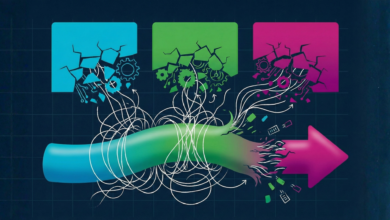AI Video’s Stunning Leap in Realism: Should We Worry?

▼ Summary
– Google introduced Veo 3, its newest AI video generation model, capable of creating 8-second clips with synchronized sound and audio dialog at 720p resolution.
– Veo 3 is part of Google’s Flow tool, which combines it with Imagen 4 and Gemini for AI filmmaking via natural language descriptions in a web interface.
– Both Veo 3 and Flow are available to US subscribers of Google AI Ultra, costing $250/month for 12,500 credits, with video generations priced at 150 credits each (~$1.50 per video).
– Veo 3 uses diffusion technology, training on real videos by adding noise and teaching a neural network to reverse the process, generating videos from text prompts or images.
– The model represents a significant advancement in AI-generated video, making it increasingly difficult to distinguish from authentic footage.
The latest advancements in AI video generation are pushing the boundaries of realism to unprecedented levels. Google’s newly unveiled Veo 3 model represents a significant leap forward, capable of producing 8-second clips with synchronized audio and sound effects—a first for the company’s AI toolkit. Operating at 720p resolution, this system responds to text prompts or still images, delivering results so polished that distinguishing between AI-created and authentic footage is becoming increasingly challenging.
Alongside Veo 3, Google introduced Flow, an integrated filmmaking platform that merges video generation with Imagen 4’s image synthesis and Gemini’s language capabilities. This web-based tool enables creators to articulate scenes in plain language, adjusting elements like characters, settings, and visual aesthetics through an intuitive interface.
Currently accessible to US subscribers of Google AI Ultra at $250 monthly, the service includes 12,500 credits—enough for approximately 83 video generations at 150 credits each. Additional credits can be purchased in bulk, bringing the cost per video to roughly $1.50. While the pricing positions this as a premium offering, the technology’s capabilities raise important questions about its practical value and implications.
Under the hood, Veo 3 employs diffusion technology, mirroring the approach used by leading image generators. The system learns by analyzing real videos that are gradually degraded into visual noise, then trains neural networks to reconstruct coherent footage from this chaos. When generating content, the model begins with random static and a text prompt, methodically refining the output until it aligns with the described scenario.
This technological progression isn’t just about sharper visuals—it represents a fundamental shift in content creation. The ability to generate convincing video with matching audio from simple text inputs opens new creative possibilities while simultaneously intensifying debates about digital authenticity. As these tools become more sophisticated, they’re forcing us to reconsider how we perceive and verify media in an increasingly synthetic landscape.
(Source: Ars Technica)





